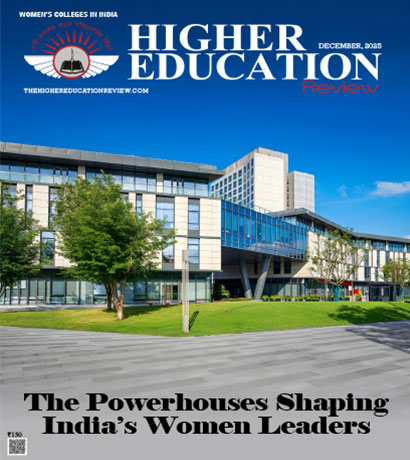The Impact of EmTech on Education and Skills

There is growing global debate over the emerging technologies, (i.e. EmTech), and their economic impact. Diverse EmTechs such as Mobile Internet, Artificial Intelligence (AI), Internet of Things (IoT), Robotics, 3D Printing, Augmented Reality/ Virtual Reality (AR/VR), Blockchain, Genomics, Renewable Energy and Advanced Materials are transforming the global economy.
The automation from AI has started endangering jobs, across industries including India’s IT/ITES sector, which has been a major contributor of lucrative job opportunities among young Indians for nearly two decades. The industry which contributes USD 160 billion revenue, USD 183 billion market capitalization and employment of 3.7 million organized jobs directly and 10 million jobs indirectly, can be protected through massive skilling and transition to EmTech. The same is true of other industries to some extent or the other. While analysts differ in estimating the magnitude of the automation’s impaction employment and the time frames, there is no scope for denying that it will put stress on job creation and will lead to significant job losses. This poses the most critical challenge for educational institutions in coming years, while preparing their students for the world of work. In India, the challenge of skill development and job creation is going to be more acute due to young demographics with 46 percent of our 1.27 billion populations in below 25 years age and having high aspirations.
To tackle the challenge, a comprehensive educational reform, improving the quality of education is needed across levels; school, vocational and higher education. Without strengthening the foundation of school education, the higher education reform cannot succeed. Also, introduction of EmTech related contemporary courses in vocational education and easy pathways from vocational to higher education are needed for vocational education to become aspirational. The higher educational institutions need to strengthen quality and linkage with research and entrepreneurship ecosystem. The educational policy planners, academic leaders and faculty have to understand the impact of EmTech on education and bring about the necessary changes swiftly in what we teach, how we teach and how we manage the governance and quality processes of our educational institutions.
First, what to teach needs a continuous update based on research, analysis and industry feedback about demand for skills needed in the economy. The individual institutions should have autonomy to innovate new programs, especially those related with EmTechs. Top academic institutions like MIT and Stanford are proactive in introducing courses related to new technologies since the faculty there is actively engaged in research and creation of those technologies. E.g. when robotics started emerging as a research field in 1980s, Carnegie Mellon University started Robotics lab and introduced post-graduate level courses. As the demand for robotic engineers increased, undergraduate program introduced electives and eventually a specialization at undergrad level. MIT and Stanford have introduced courses on Blockchain technologies. India has huge arts education bias with arts and humanities contributing 40 percent of India’s 6.3 million annual graduate output. While liberal arts education does carry potential to spur creativity needed for the emerging economy, practical skills such as design thinking and communication need to be an integral part of the curriculum.
Second, EmTechs provide new possibilities for teaching, more appropriately facilitating learning. The Massive Online Open Courses (MOOCs) such as EdX, Coursera, Udacity have greatly improved access to quality online content for everyone. The government of India has taken a welcome step of recently launching an Indian MOOC in the form of Swayam, which will boost creation of rich Indian online educational content. MOOCs allow personalization of education through self-paced learning and application of AI/ analytics based on learner/ course metadata.
With high quality content ubiquitously available, the role of faculty shifts to a facilitator and flipped classroom model with self-paced viewing of lecture content following by in class exercises is more effective. Faculty needs to be trained in facilitation and needs to have practical experience through linkage with industry. Also, EmTechs can greatly improve learning of skills. E.g. 3D printed anatomical models are found to be very effective in medical education, especially in training surgeons. Similarly, AR/ VR can greatly enhance immersive learning experience of students across fields.
Finally, enabling governance and quality management mechanism for vocational and higher education is vital for strengthening the education sector. Seamless fungibility of credits across online to regular university education is needed. The government seems to be working on promising steps such as enabling framework for 20 world-class institutions, a single Higher Education Regulator, rationalizing the engineering/ MBA capacity by pruning low quality institutes. Hopefully, the new education policy will soon provide an enabling and progressive governance framework for enhancing quality of Indian higher education. Also, it needs to address the vital question of linking academic output to tangible economic value creation by incorporating measures to promote research, IP generation and entrepreneurship on campus.
Sometime ago, two eminent Harvard Economists Claudia Goldin and Lawrence Katz proposed an influential thesis of a continuous race between education and technology. Also, there is a race among nations to make their education system competitive. Latecomers, such as China have taken massive strides into big league with Tsinghua, Peking University and Fudan now rivalling Ivy League names in big league tables. We must remember that the road to India’s revival of national greatness will pass through the alleys of our universities and higher education institutions!

